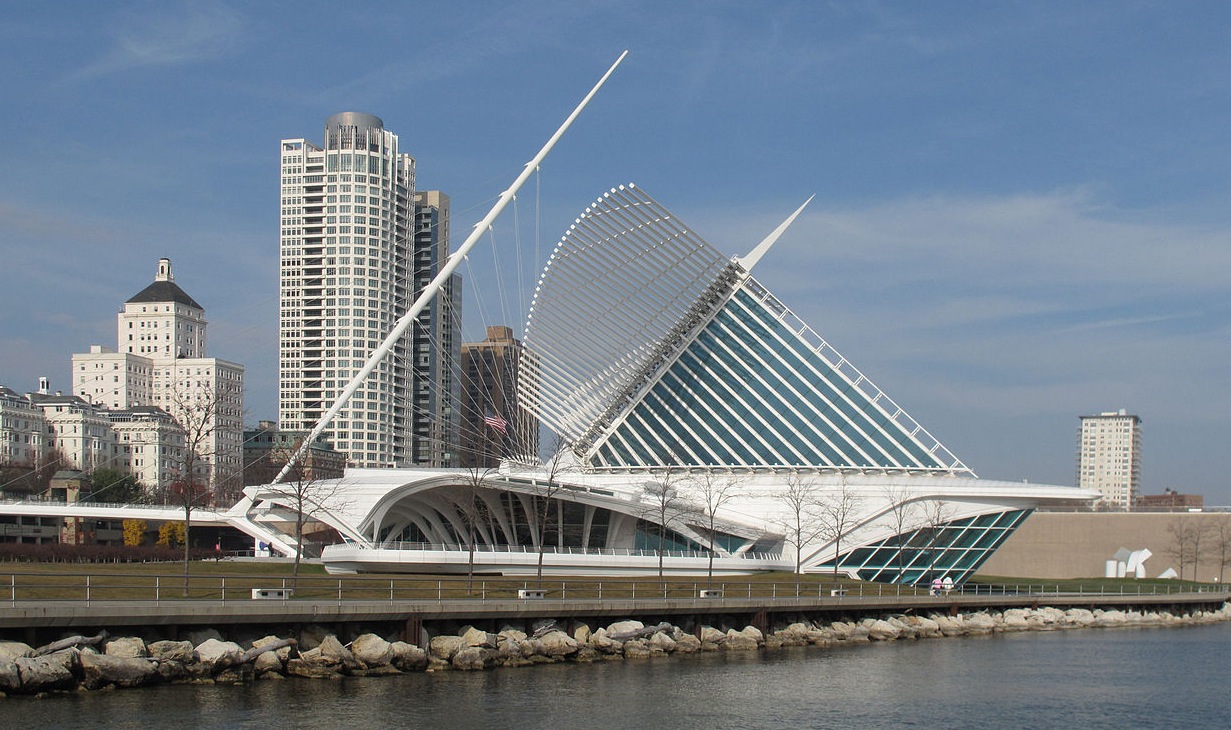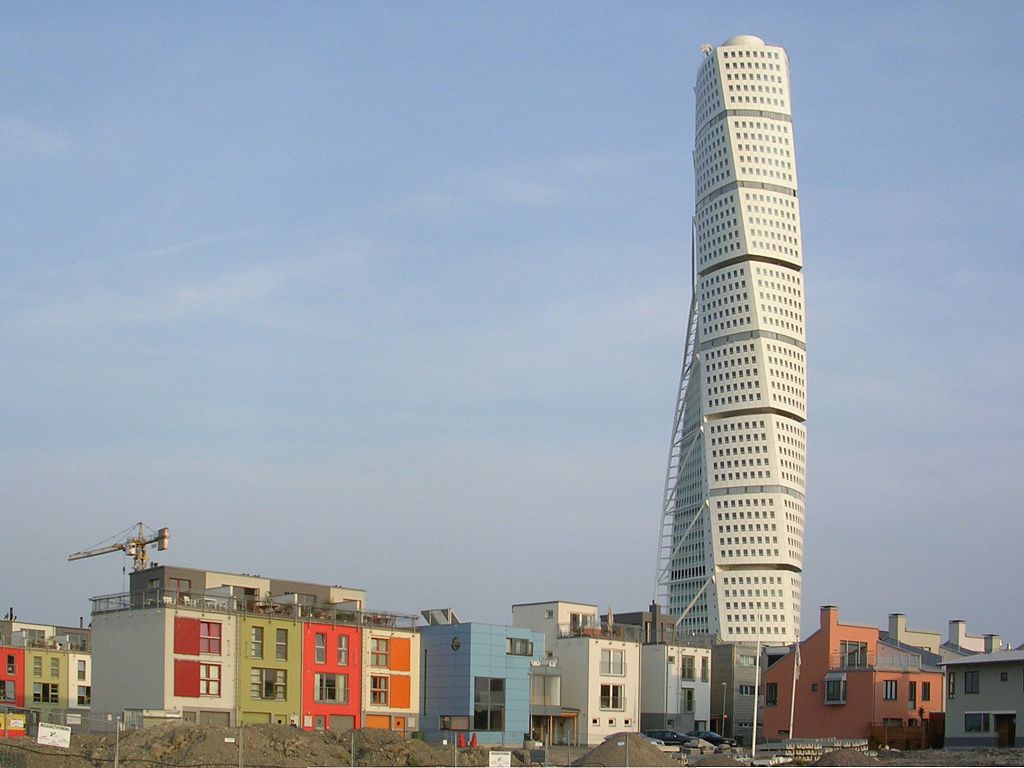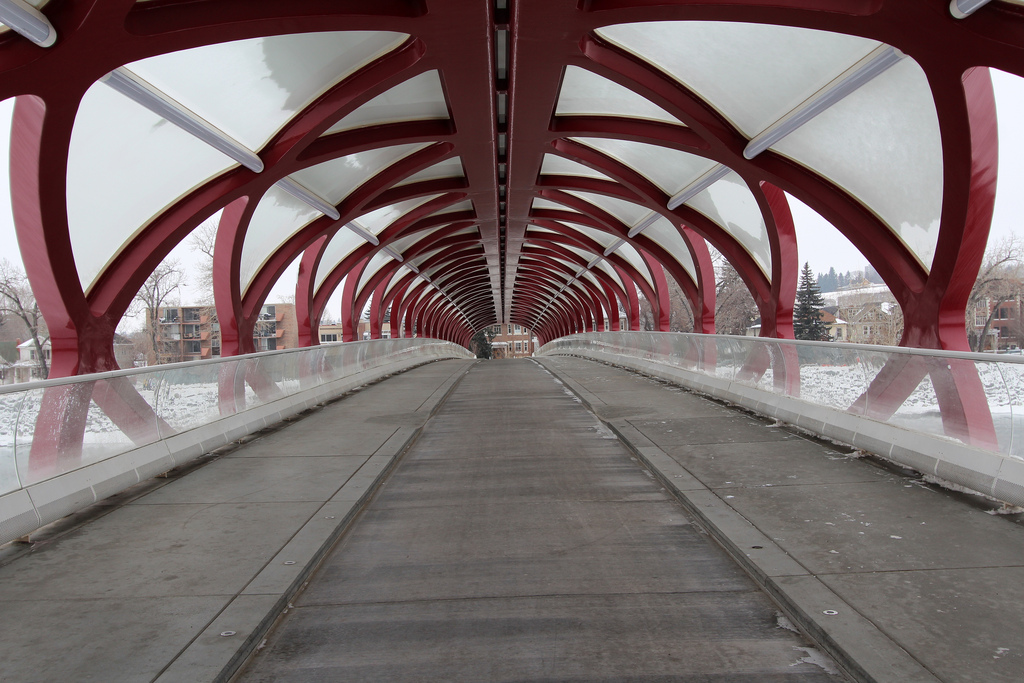On Tuesday, the Chicago Athenaeum Museum of Architecture and Design and the European Centre for Architecture, Art, Design and Urban Studies announced Santiago Calatrava as the winner of the 2015 European Prize for Architecture.
The honor is awarded every year to architects who have “blazoned a new path and direction for an architecture that is deeply humane and committed to forward the principles of European humanism,” according to The Chicago Athenaeum’s website.
Calatrava, who has a background in both architecture and engineering, is known for his curved structures made of steel and concrete.
"His buildings are not just 'building,'" said Christian Narkiewicz-Laine, the President of The Chicago Athenaeum, in a statement. "They are powerful works of art inspired by a master's gifted hand and sculpted by a superior, critical eye."
A few of his projects include the Stadelholfen Railway Station in Zurich; the Peace Bridge in Calgary, Canada; the Milwaukee Art Museum in Milwaukee; Turning Torso, in Malmö, Sweden; and the City of Arts and Sciences of Valencia, Spain.
Calatrava will receive the award at a ceremony at the World Trade Center in New York on November 17. Also, a catalog of his works will be published by the Metropolitan Arts Press.
 Milwaukee Art Museum. Photo: John Picken/Wikimedia Commons
Milwaukee Art Museum. Photo: John Picken/Wikimedia Commons
 Turning Torso. Photo: Väsk/Wikimedia Commons
Turning Torso. Photo: Väsk/Wikimedia Commons
 Calgary's Peace Bridge. Photo: davebloggs007/Creative Commons
Calgary's Peace Bridge. Photo: davebloggs007/Creative Commons
Related Stories
| Sep 16, 2010
Gehry’s Santa Monica Place gets a wave of changes
Omniplan, in association with Jerde Partnership, created an updated design for Santa Monica Place, a shopping mall designed by Frank Gehry in 1980.
| Sep 16, 2010
Green recreation/wellness center targets physical, environmental health
The 151,000-sf recreation and wellness center at California State University’s Sacramento campus, called the WELL (for “wellness, education, leisure, lifestyle”), has a fitness center, café, indoor track, gymnasium, racquetball courts, educational and counseling space, the largest rock climbing wall in the CSU system.
| Sep 13, 2010
Community college police, parking structure targets LEED Platinum
The San Diego Community College District's $1.555 billion construction program continues with groundbreaking for a 6,000-sf police substation and an 828-space, four-story parking structure at San Diego Miramar College.
| Sep 13, 2010
Campus housing fosters community connection
A 600,000-sf complex on the University of Washington's Seattle campus will include four residence halls for 1,650 students and a 100-seat cafe, 8,000-sf grocery store, and conference center with 200-seat auditorium for both student and community use.
| Sep 13, 2010
Second Time Around
A Building Team preserves the historic facade of a Broadway theater en route to creating the first green playhouse on the Great White Way.
| Sep 13, 2010
Palos Community Hospital plans upgrades, expansion
A laboratory, pharmacy, critical care unit, perioperative services, and 192 new patient beds are part of Palos (Ill.) Community Hospital's 617,500-sf expansion and renovation.
| Sep 13, 2010
China's largest single-phase hospital planned for Shanghai
RTKL's Los Angles office is designing the Shanghai Changzheng New Pudong Hospital, which will be the largest new hospital built in China in a single phase.
| Sep 13, 2010
Richmond living/learning complex targets LEED Silver
The 162,000-sf living/learning complex includes a residence hall with 122 units for 459 students with a study center on the ground level and communal and study spaces on each of the residential levels. The project is targeting LEED Silver.















